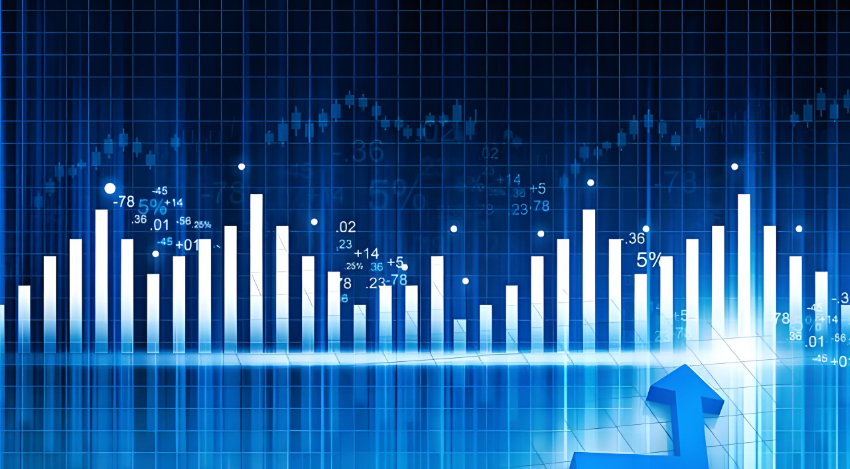Dollar Expected to Rise Over 5% This Year
Advertisements
In a surprising turn of events following last Friday's exceptionally robust non-farm payroll report from the United States, Goldman Sachs has revised its forecasts for the dollar upwards. This is largely based on the premise that, despite expectations for inflation to rise due to tariffs, the strength of the American economy could lead to a deceleration in the Federal Reserve's monetary easing strategies.
The firm’s strategists, including Kamakshya Trivedi, expressed in their report, “With the new tariffs coming into play and the US economy showing continuous strength, we anticipate a rise of approximately 5% in the dollar over the next year.” Even after this upward adjustment, they cautioned that “there remains a risk for the dollar to strengthen further.”
The latest non-farm payroll data has significantly impacted expectations surrounding Federal Reserve interest rate cuts.
This marks Goldman Sachs' second upward revision of its dollar forecast in about two months. The US economy continues its impressive growth, demonstrated through several key economic indicators such as stable GDP growth, a thriving consumer market, and increasing corporate profits, all showcasing remarkable resilience and vitality. Meanwhile, ongoing rumors regarding impending tariffs are likely to trigger inflationary pressures, casting doubt on the market’s confidence in further interest rate cuts by the Fed.
The non-farm payroll report released last Friday acted as a bombshell, altering market expectations significantly. According to the data, the number of non-farm jobs added in December soared to an astonishing 256,000—far exceeding predictions—marking the highest growth in nine months. Even more remarkable was the unexpected decline in the unemployment rate, which fell to 4.1%, down from prior levels and expectations.
Given the striking nature of the non-farm employment report, Jan Hatzius, Goldman’s chief economist, and his team have adjusted their forecast for Federal Reserve rate cuts, suggesting now that cuts will occur once in June and again in December, as opposed to their previous prediction for March, June, and September.
Aditya Bhave, an economist at Bank of America, confidently asserted that in light of the remarkably strong December employment data, the Federal Reserve’s cycle of interest rate cuts has come to an end. In this report, job additions vastly surpassed expectations, and the reduced unemployment rate demonstrated the flourishing nature of the US labor market. Bhave further noted that if inflation, measured by the year-over-year growth in the core personal consumption expenditures price index, exceeds 3%, and inflation expectations continue to rise, discussions in the market will swiftly shift towards when the Fed might initiate a rate hike.

Amid growing fears on Wall Street of the Federal Reserve slowing its pace of rate cuts, market sentiment has turned increasingly tense. Goldman Sachs anticipates that the value of the dollar against a basket of currencies, including the euro and Australian dollar, is likely to keep rising. Strong US economic data coupled with potential new tariff policies have considerably enhanced the appeal of the dollar. In contrast, the eurozone’s lackluster economic growth and persistent inflation pressures, along with difficulties faced by the Australian dollar due to domestic monetary policy and commodity export challenges, bode poorly for these currencies, thereby boosting market optimism towards the dollar.
Goldman now predicts that the euro-dollar exchange rate will drop below parity, targeting a figure of €1 to $0.97 within the next six months, a significant recalibration from an earlier estimate of €1 to $1.05. The last instance when the euro fell below parity against the dollar occurred in 2022, amidst an ensuing European energy crisis, resulting in surging prices for energy commodities like natural gas that severely disrupted Europe’s already fragile economic recovery from the pandemic.
Furthermore, Goldman has adjusted its forecast for the British pound against the dollar from $1.32 down to $1.22 over the next six months, reflecting the ongoing stagnation in the UK economy and increasing expectations for further rate cuts from the Bank of England. On Monday, the pound continued its previous weak trajectory, plunging by 0.7% to an exchange rate of $1.2126, reaching its lowest level since November 2023.
In addition, Goldman expects the Australian dollar to trade at around $0.62 against $1 in the next three months, a downward revision from a previously estimated $0.66. On Monday, the Australian dollar fell by 0.1%, trading close to $0.61.
This recent upward revision in dollar forecasts by Goldman Sachs marks a notable shift in their outlook regarding the anticipation of Federal Reserve rate cuts.
In September of last year, Goldman had lowered its expectations for the dollar, predicting a downturn as the Federal Reserve continued to ease its monetary policy. However, since November 5, increasing concerns surrounding the potential inflationary pressures of proposed tariffs have driven the dollar higher, defying Goldman’s previous projections.
Post Comment